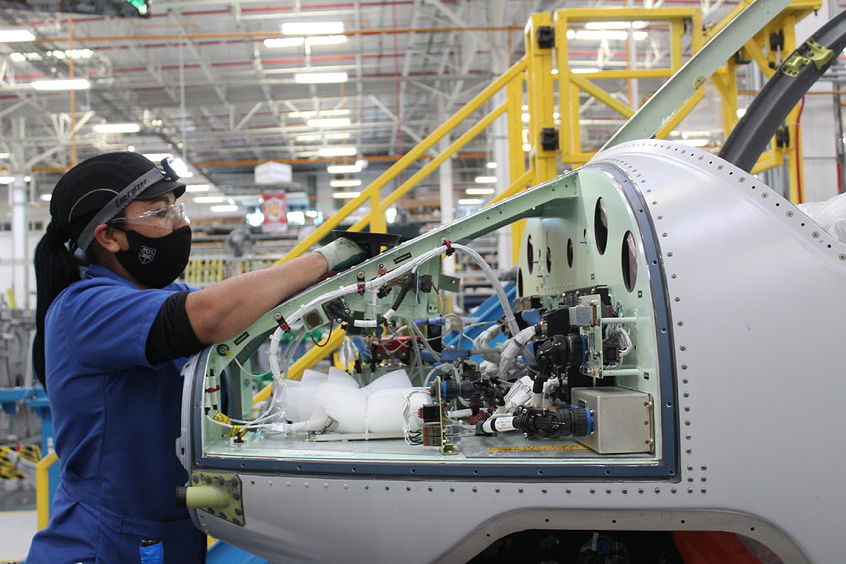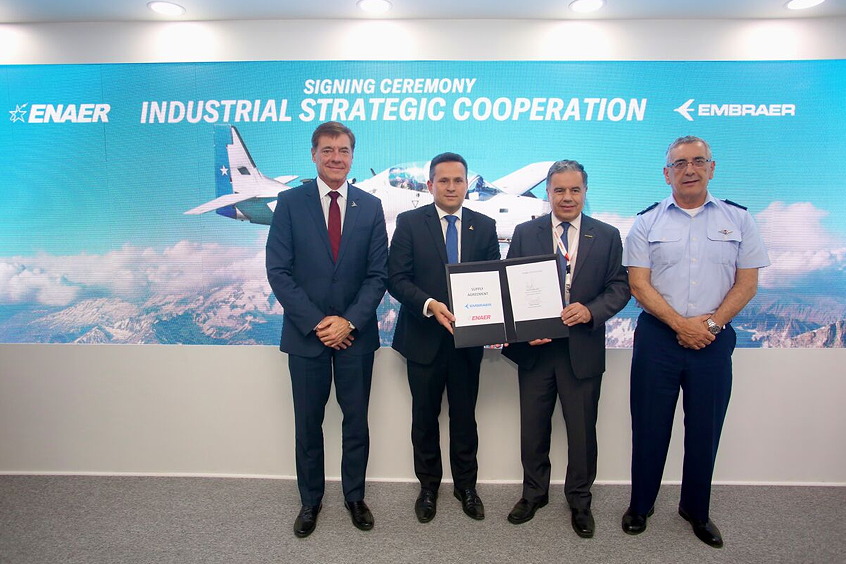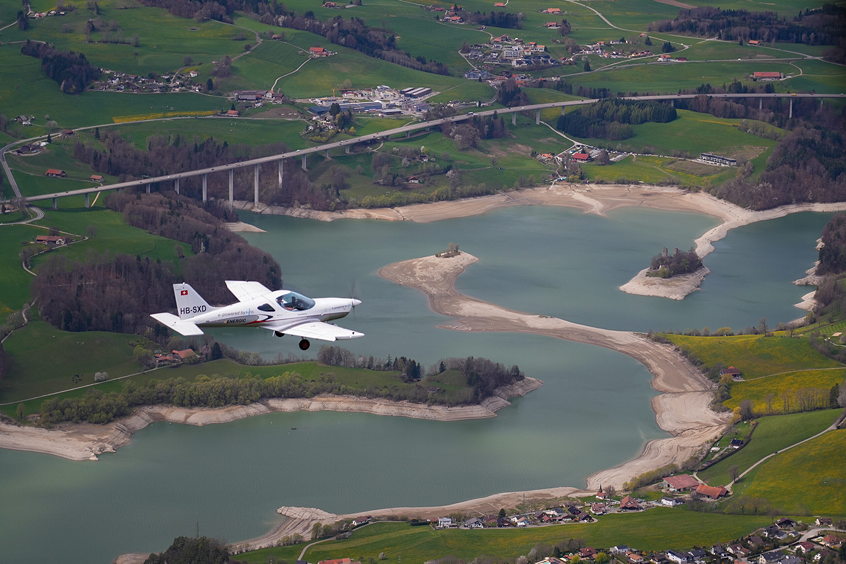GE Aviation, a global leader in jet engines and aircraft systems, announced today at ceremonies here that it will break ground this year on a new $100 million jet engine assembly facility in neighboring Lafayette, Indiana.
It becomes the seventh new GE Aviation facility in the U.S. in the past seven years – joining sites in Batesville, MS; Auburn, AL; Greenville, SC; Dayton, Ohio; Ellisville, MS; and Asheville, NC. These facilities support more than 2,500 new U.S. jobs and investment in more than 1 million square feet of new facilities. Between 2013 and 2017, GE Aviation expects to invest more than $3.5 billion in plant and equipment at its sites worldwide, with most of the investment in the U.S.
The new 225,000-square-foot facility in Lafayette will assemble the new LEAP engine of CFM International, a 50/50 joint company of GE and Snecma (Safran) of France. CFM has logged total orders and commitments with airlines for more than 6,000 LEAP jet engines – and it does not enter service until 2016. It will power new Airbus A320neo, Boeing 737 MAX, and COMAC (China) C919 aircraft for airlines worldwide. Click here for photos from the event.
Launched in 2008, the LEAP is now undergoing development testing. As the engine transitions to the production phase, GE could begin hiring at the new Lafayette facility as early as 2015. Within five years, the plant's workforce is expected to exceed 200 people with the capacity to do final assembly for the engine as well as the engine's hot section (compressor, combustor, high-pressure turbine).
“We are thrilled by the airline industry's enthusiasm for the new LEAP engine and its groundbreaking technologies,” said David Joyce, president and CEO of GE Aviation, headquartered in Cincinnati, Ohio. “Beginning in 2015, the LEAP engine will experience a dramatic production ramp-up for the remainder of the decade. We are grateful to the entire Indiana team for ensuring that our Lafayette assembly plant will be soon up and running.”
“With a nod to our past and an eye on our future, Indiana is a manufacturing state, with decades of experience in building the items that power our world. But we are also a state of innovation, developing the technologies of tomorrow.” said Indiana Governor Mike Pence. “GE Aviation's plans in Indiana fuse the two. By selecting Indiana for its new jet engine facility, the company gains a workforce skilled at both developing the big ideas and bringing them to life.”
Strong State of Indiana and Purdue University collaboration
Final assembly of the LEAP engine at the Lafayette facility will involve using components and sub-assemblies from GE and Snecma operations and from their suppliers around the world. The LEAP engine will also be assembled at GE's existing engine assembly plant in Durham, North Carolina.
The Lafayette facility will operate a highly advanced assembly line incorporating several new technologies, including automated vision inspection systems and radio frequency parts management to easily spot parts on the shop floor. GE worked closely with the state of Indiana to secure the Lafayette location. The state of Indiana, the Indiana Economic Development Corporation (IEDC), the city of Lafayette, and Tippecanoe County have provided technical support and incentives to ensure a smooth and successful start-up. To prepare for the new factory, GE will work with Ivy Tech at Lafayette for skills and training support.
The plant will be minutes from Purdue University in West Lafayette, which has a long history of collaboration with GE Aviation and its parent, General Electric Co. GE employs more than 1,200 Purdue University alumni, including more than 400 at GE Aviation. Over the past five years, GE has financed more than $2.5 million in research and development projects at Purdue.
GE Aviation leadership has met with Purdue officials to explore opportunities that will closely align the university to the new Lafayette facility. Purdue University is widely recognized as a leader in manufacturing technology, and GE intends to use the new facility as a catalyst for identifying talent and research capability.
“Purdue and GE are continuing to build a broad and strong collaboration in both research and talent recruitment,” said Mitch Daniels, president of Purdue University. “In today's world, a strong research university is the best economic magnet a state can have, and today's announcement is a perfect example of that principle in action.”
GE Aviation's Long-term Growth Outlook
The Lafayette facility reflects the growth at GE Aviation. Jet engine deliveries for GE Aviation and its partner companies (including CFM International) are slated to grow from 2,442 jet engines in 2013 to about 2,850 in 2016.
GE Aviation and its partner companies have the largest and fastest-growing installed base of jet engines in commercial aviation and a global services network to support them. GE and its partner companies have about 34,000 commercial jet engines in service, and that will grow to 41,000 engines by 2020. GE Aviation employs approximately 44,000 people and operates more than 80 facilities worldwide.
By the end of 2013, GE Aviation's multi-year backlog for equipment and services reached $125 billion, more than a 20 percent growth in one year. In addition to its seven new facilities over the past seven years, GE Aviation is making significant investments in its existing operations across the U.S., including investments of more than $350 million since 2012 in its southern Ohio operations in Cincinnati, Dayton, and Peebles.
Technologies in the CFM International LEAP engine
The CFM LEAP engine to be assembled in Lafayette will be among the world's most advanced jet engines, with carbon fiber composite fan blades and fan case (from Snecma), the latest thermodynamic design, higher bypass and compression ratios, advanced 3-D aerodynamic design and greater use of advanced materials. The engine is targeted for a 15 percent improvement in fuel efficiency compared to its predecessor, double-digit improvement in noise and emissions, and the lowest overall cost of ownership in the industry. Other technology features of the LEAP engine:
Additive manufacturing
At its Cincinnati operation, GE Aviation is using a technology called direct metal laser melting (DMLM) to manufacture LEAP fuel nozzles directly from computer-aided design (CAD) files. The process actually “grows” parts, layer by layer, using metal powder and a high-powered fiber laser. The part maintains the same material properties and density as a traditionally manufactured piece, but the process allows for much more complex geometries than were possible in the past. The resulting part is 25 percent lighter than previous nozzles and five times stronger.
Advanced materials
The LEAP will be the first commercial jet engine with ceramic matrix composite (CMC) components in the hot section, representing a significant technology breakthrough for GE and the jet propulsion industry. CMCs are made of silicon carbide ceramic fibers and ceramic resin, manufactured through a highly sophisticated process and further enhanced with proprietary coatings. GE views CMCs as a differentiator for its next-generation aircraft engines. The ultra-lightweight CMC material supports extremely high temperatures in the high-pressure turbine. CMC benefits include: reduced weight, enhanced performance and improved durability that provides longer time on wing, translating into lower fuel and maintenance costs for customers.
| Contact details from our directory: | |
| GE Aerospace Engines | Turboprop Engines, Turboshaft Engines, Turbofan Engines, Turbojet Engines |
| CFM International Inc. | Turbofan Engines |
| Related aircraft programs: |
| COMAC C919 |
| Boeing 737 |
| Airbus A320 |
| Related directory sectors: |
| Engines |
Weekly news by email:
See the latest Bulletin, and sign up free‑of‑charge for future editions.

Bell Mexico delivers 800th commercial aircraft cabin

Chile's ENAER expands cooperation with Embraer

Eve names KAI as supplier for eVTOL pylons
